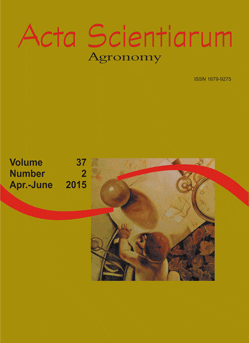<b>The spatial and temporal independence of Italian Zucchini production
Abstract
It is necessary to know the production variability of experimental units in a protected environment, both in terms of space and throughout different harvests. This knowledge helps reduce experimental error and increases result reliability in combination with the adoption of appropriate experimental techniques and cultural management. The objective of this study was to characterize the spatial and temporal independence of Italian Zucchini fruit production as cultivated in a protected environment. The study used production data from exploratory experiments under protected cultivation in the Department of Plant Sciences of the Federal University of Santa Maria. Different units sizes were simulated on the basis of known production values for the number of plants per row. To verify the independence or randomness of fruit production, a test run was applied to the units within the rows of individual and grouped harvests and in the same unit between individual and grouped harvests. There was a greater randomness of production in units with a higher number of plants. Using a lower number of harvests randomizes the production of units as the harvests are carried out. Groupings of harvests and units formed by four and five basic units are the most efficient combination for reducing non-randomness in the production of Italian Zucchinis.
Downloads
DECLARATION OF ORIGINALITY AND COPYRIGHTS
I Declare that current article is original and has not been submitted for publication, in part or in whole, to any other national or international journal.
The copyrights belong exclusively to the authors. Published content is licensed under Creative Commons Attribution 4.0 (CC BY 4.0) guidelines, which allows sharing (copy and distribution of the material in any medium or format) and adaptation (remix, transform, and build upon the material) for any purpose, even commercially, under the terms of attribution.




















































